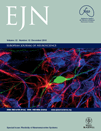The present quantitative meta-analysis set out to test whether cue-reactivity responses in humans differ across drugs of abuse and whether these responses constitute the biological basis of drug craving as a core psychopathology of addiction.
By means of activation likelihood estimation, we investigated the concurrence of brain regions activated by cue-induced craving paradigms across studies on nicotine, alcohol and cocaine addicts.
Furthermore, we analysed the concurrence of brain regions positively correlated with self-reported craving in nicotine and alcohol studies.
We found direct overlap between nicotine, alcohol and cocaine cue reactivity in the ventral striatum. In addition, regions of close proximity were observed in the anterior cingulate cortex (ACC; nicotine and cocaine) and amygdala (alcohol, nicotine and cocaine).
Brain regions of concurrence in drug cue-reactivity paradigms that overlapped with brain regions of concurrence in self-reported craving correlations were found in the ACC, ventral striatum and right pallidum (for alcohol).
This first quantitative meta-analysis on drug cue reactivity identifies brain regions underlying nicotine, alcohol and cocaine dependency, i.e. the ventral striatum. The ACC, right pallidum and ventral striatum were related to drug cue reactivity as well as self-reported craving, suggesting that this set of brain regions constitutes the core circuit of drug craving in nicotine and alcohol addiction.
Request Reprint E-Mail: simone.kuhn@ugent.be
